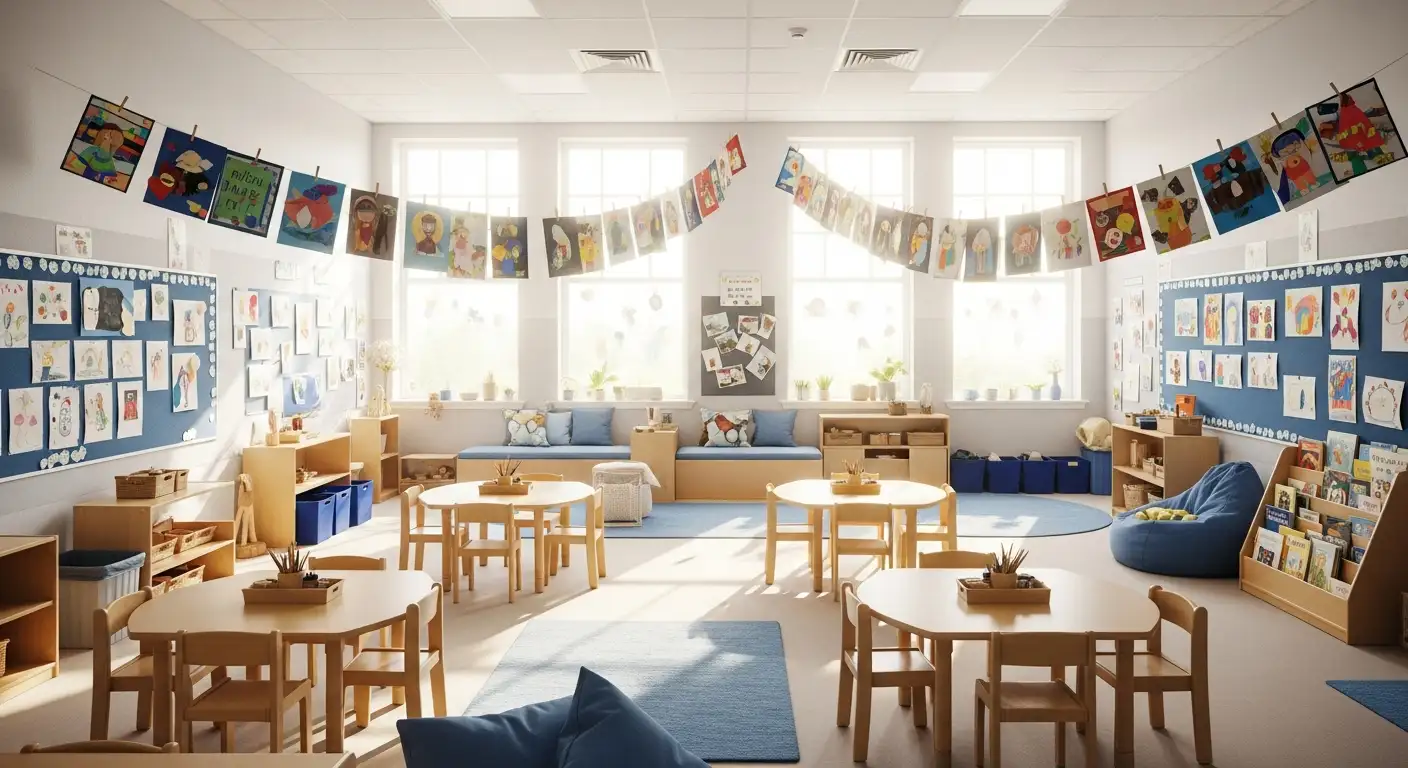Types Of Autism
Unraveling the Spectrum: A Comprehensive Guide to Autism Variations

Understanding the Diversity of Autism Spectrum Disorder
Autism Spectrum Disorder (ASD) encompasses a wide range of neurodevelopmental conditions characterized by challenges in social interaction, communication, and behavior. Historically viewed as separate disorders, autism's classifications have evolved into a spectrum model, emphasizing individual differences rather than strict categories. This article explores the various types of autism, their symptoms, historical background, classifications, and biological underpinnings to provide a thorough understanding of this complex condition.
Main Classifications of Autism Spectrum Disorder (ASD)

Overview of ASD as a broad category
Autism Spectrum Disorder (ASD) is a comprehensive term that describes a variety of neurodevelopmental conditions characterized by challenges in social interaction, communication, and repetitive behaviors. Instead of viewing autism as a single, uniform condition, the spectrum approach recognizes the wide range of traits, strengths, and support needs across individuals.
Historical classifications like autistic disorder and Asperger’s syndrome
In the past, autism was divided into specific diagnoses. 'Autistic disorder' or 'Kanner’s syndrome' described individuals with severe impairments, including language delays and social difficulties. Asperger’s syndrome was considered a milder form, where individuals typically had normal or above-average intelligence and no early language delay. Other conditions like childhood disintegrative disorder (CDD) and Pervasive Developmental Disorder-Not Otherwise Specified (PDD-NOS) were also recognized. Rett syndrome, caused by genetic mutations, was once thought to be related but is now classified separately due to distinct biological causes.
Current framework with support-based levels in DSM-5
Recent changes, particularly in DSM-5, have shifted the focus from discrete diagnoses to a spectrum model based on individual support needs. ASD is now categorized into three severity levels:
| Level | Description | Support Needed |
|---|---|---|
| Level 1 | Requiring support | Difficulties in social communication and inflexibility, but can function with minimal support |
| Level 2 | Requiring substantial support | Marked deficits in social interactions, repetitive behaviors, and need for ongoing support |
| Level 3 | Requiring very substantial support | Severe challenges in all areas, often with little or no verbal communication |
This model emphasizes the importance of tailoring interventions based on how much assistance each individual requires.
Differences between past and present classifications
Previously, conditions like Asperger’s syndrome were treated as separate diagnoses, often diagnosed in school-age children or adults. Now grouped under ASD, they are understood as part of a continuous spectrum with varying severity. Meanwhile, disorders like Rett syndrome are recognized as distinct due to their genetic basis, separating them from ASD classifications.
Significance of individual symptom variation
The spectrum concept highlights that autism manifests very differently across individuals. Some may have high intelligence and social strengths but struggle with repetitive behaviors. Others may experience significant developmental delays and require extensive support. This understanding encourages personalized strategies for diagnosis, intervention, and support, aligning treatment to each person’s unique needs.
Understanding the broad categories and their evolution helps in recognizing the diverse presentations of autism and ensuring appropriate resources and interventions are provided for each individual.
Historical and Current Terminology in Autism
 The term 'autism' has a complex history that reflects evolving understanding and attitudes toward neurodevelopmental differences. Its origins trace back to 1911 when Eugen Bleuler used it to describe a symptom of schizophrenia involving withdrawal from reality. In the 1920s, the term was applied to children displaying behaviors like inner fantasy and social detachment, broadening its initial meaning.
The term 'autism' has a complex history that reflects evolving understanding and attitudes toward neurodevelopmental differences. Its origins trace back to 1911 when Eugen Bleuler used it to describe a symptom of schizophrenia involving withdrawal from reality. In the 1920s, the term was applied to children displaying behaviors like inner fantasy and social detachment, broadening its initial meaning.
It was not until 1943 that psychiatrist Leo Kanner introduced the phrase 'early infantile autism,' based on his observation of children with distinct developmental patterns. Kanner characterized this condition by social withdrawal, communication difficulties, and repetitive behaviors, distinguishing it from schizophrenia.
Throughout the mid-20th century, various terms surfaced, including 'Kanner syndrome,' 'autistic disorder,' and 'childhood psychosis,' often describing similar presentations. These labels underscored the limited understanding and varied clinical descriptions of autism.
As research progressed, particularly into the late 20th and early 21st centuries, the concept shifted from individual disorders to a spectrum. The Diagnostic and Statistical Manual of Mental Disorders (DSM) adopted the label 'autism spectrum disorder' (ASD) to represent a range of symptoms and severity levels. This change reflected recognition of the diverse ways autism manifests across different people.
Today, 'autism spectrum disorder' is the universally accepted term, encompassing previous diagnoses like autistic disorder, Asperger’s syndrome, and PDD-NOS. The neurodiversity movement advocates viewing autism as a natural variation in human cognition rather than purely a disorder, fostering a societal shift toward acceptance and support for autistic individuals.
This evolving terminology not only illustrates advances in scientific understanding but also highlights changing societal attitudes toward autism—moving from stigma to inclusion.
Types of Autism and Their Symptoms
 Autism spectrum disorder (ASD) comprises various conditions, each with differing features and severity levels. The main types include autistic disorder (also known as classic autism), Asperger’s syndrome, PDD-NOS (pervasive developmental disorder not otherwise specified), childhood disintegrative disorder, and Rett syndrome.
Autism spectrum disorder (ASD) comprises various conditions, each with differing features and severity levels. The main types include autistic disorder (also known as classic autism), Asperger’s syndrome, PDD-NOS (pervasive developmental disorder not otherwise specified), childhood disintegrative disorder, and Rett syndrome.
Autistic disorder, or classic autism, involves significant impairments in social interaction and communication. Children often display limited eye contact, delay or absence of spoken language, and difficulties forming relationships. Repetitive behaviors such as hand-flapping, rocking, or lining up objects are also common. These behaviors are coupled with a need for routines and sensitivities to sensory stimuli.
Asperger’s syndrome shares some core features with autism but tends to be milder. Individuals usually have average or above-average intelligence, strong verbal skills, and fewer delays in language development. However, they often struggle with social cues, understanding others’ emotions, and maintaining conversations. These social challenges are distinctive, even though their communication abilities are relatively intact.
PDD-NOS, or milder autism, includes individuals who exhibit some autistic traits but do not meet the full criteria for autistic disorder or Asperger’s syndrome. Symptoms may involve uneven skill development, social and communication difficulties, and repetitive behaviors, but usually with less severity.
Childhood disintegrative disorder is rare and severe. It starts with normal development, but children experience a sudden regression of skills after age 2 or 3. They can lose language, play skills, and social engagement, often accompanied by seizures and other neurological symptoms.
Rett syndrome is a distinct neurodevelopmental disorder primarily affecting girls. It involves a period of normal development followed by a gradual loss of motor and communication skills. Signs include slowed head growth, abnormal breathing patterns, and motor issues. Unlike other autism types, Rett syndrome is caused by genetic mutations, particularly in the MECP2 gene.
Across all types, common symptoms include struggles with social interactions and communication—such as avoiding eye contact, not responding to their name, and difficulty understanding social cues. Repetitive behaviors like rocking, hand-flapping, or insistence on routines are prevalent. Sensory sensitivities and narrow, intense interests are also frequently observed.
The autism spectrum's wide range of symptoms underscores its variability. Some individuals may be high-functioning with strong language abilities, while others may have significant support needs and non-verbal communication. Early diagnosis and tailored interventions can greatly improve the quality of life regardless of the specific autism type.
Less Common and Rare Autism-Related Conditions
 Are there rare or less common types of autism?
Are there rare or less common types of autism?
Yes, beyond the more well-known forms like autistic disorder and Asperger’s syndrome, there are several rare conditions linked to autism spectrum traits. One such disorder is Rett syndrome, a neurodevelopmental condition primarily affecting girls. Rett syndrome is caused by mutations in the MECP2 gene and is characterized by a progressive loss of motor skills, speech, and coordination, often accompanied by breathing irregularities and seizures.
Other rare disorders include Fragile X syndrome, the most common inherited cause of autism, which results from a mutation in the FMR1 gene. Features often involve intellectual disability, unique physical traits, and social challenges. Angelman syndrome, caused by genetic abnormalities on chromosome 15, shares some autism-like traits but features severe speech impairment, happy demeanor, and movement issues.
Prader-Willi syndrome, also linked to chromosome 15, can involve intellectual impairment, behavioral issues, and compulsive eating. Landau-Kleffner syndrome leads to speech regression and epilepsy, distinguished by the sudden loss of language skills.
Williams syndrome is another condition that shares some autistic features but is typically marked by strong verbal skills and distinctive physical features. These rare conditions involve complex genetic issues and often include physical or neurological symptoms that set them apart from common ASD cases.
Early diagnosis of these rare forms is crucial for effective management. It allows for tailored treatments, early intervention, and support for families.
Genetic testing plays a pivotal role in identifying these disorders. By pinpointing specific gene mutations or chromosomal abnormalities, healthcare professionals can better understand the underlying causes and provide accurate diagnoses.
Recognizing these uncommon conditions highlights the importance of comprehensive assessment in autism spectrum disorder. It ensures that unique needs are met and that each individual receives the most appropriate care.
Autism Classifications Across Age Groups
How do autism classifications differ for adults and children?
Autism spectrum disorder (ASD) classifications generally remain consistent across different ages, focusing on core aspects like social communication challenges and repetitive behaviors. For children, signs are often observable early. These include delayed speech development, difficulty making eye contact, and a strong preference for routines. Such early indicators help in easier diagnosis.
In contrast, autism in adults can be more difficult to identify. Many adults learn to mask their symptoms or develop coping strategies, which can obscure the typical signs seen in children. They might experience high social anxiety, have subtle social difficulties, and succeed in compensating for their challenges. As a result, ASD in adults often presents through less obvious behaviors.
Although the diagnostic criteria stay largely the same, the way autism manifests changes with age. Children often show clear developmental delays or atypical behaviors, whereas adults tend to demonstrate more nuanced social and communication difficulties. This evolution impacts how clinicians recognize and diagnose autism at different life stages.
Overall, while the core classifications are stable, recognizing autism in adults requires awareness of how symptoms may shift over time. This understanding helps improve diagnosis and support for autistic individuals across the lifespan.
Signs of Autism in Adults and Awareness
What are the signs of autism in adults?
In adults, autism may sometimes go unnoticed or be misdiagnosed because many individuals develop coping mechanisms known as masking behaviors. Recognizable signs include difficulties with social interactions, such as challenges in understanding others’ thoughts and feelings, making and maintaining friendships, or feeling more comfortable being alone.
Communication issues are also common. Adults might use limited eye contact, respond in a blunt or literal manner, and find it hard to interpret figures of speech like sarcasm or idioms. They may have specific, intense interests and prefer routine activities, resisting changes that disrupt their established patterns.
Sensory sensitivities are prevalent among many adults with autism. They might be overwhelmed by bright lights, loud noises, or certain textures, or seek sensory input through specific activities.
A significant aspect of autism in adults is masking—where individuals imitate social behaviors to blend in, which can be mentally and physically draining, sometimes leading to exhaustion and feelings of loneliness.
Recognizing these signs is crucial. Awareness can help adults seek professional evaluation, obtain support, and improve their quality of life, fostering understanding and acceptance within society.
Embracing Diversity in the Spectrum
The diversity within autism spectrum disorder is vast, ranging from differences in severity and presentation to unique biological and genetic profiles. Recognizing the various types and understanding their characteristics is crucial for promoting awareness, providing appropriate support, and fostering an inclusive society that embraces neurodiversity. As research continues to uncover the biological and genetic underpinnings of autism, personalized approaches to diagnosis and intervention are emerging. Whether in children or adults, every individual on the spectrum has unique strengths and challenges—highlighting the importance of acceptance and tailored support for all.
References
- What Are the Types of Autism Spectrum Disorders? - WebMD
- What Are the 5 Different Types of Autism? - Spectrum of Hope
- Autism spectrum disorder - Symptoms and causes - Mayo Clinic
- ASD levels of severity - Autism Speaks
- Autism - Wikipedia
- Major autism study uncovers biologically distinct subtypes, paving ...
- What Is Autism Spectrum Disorder? - American Psychiatric Association




































































































